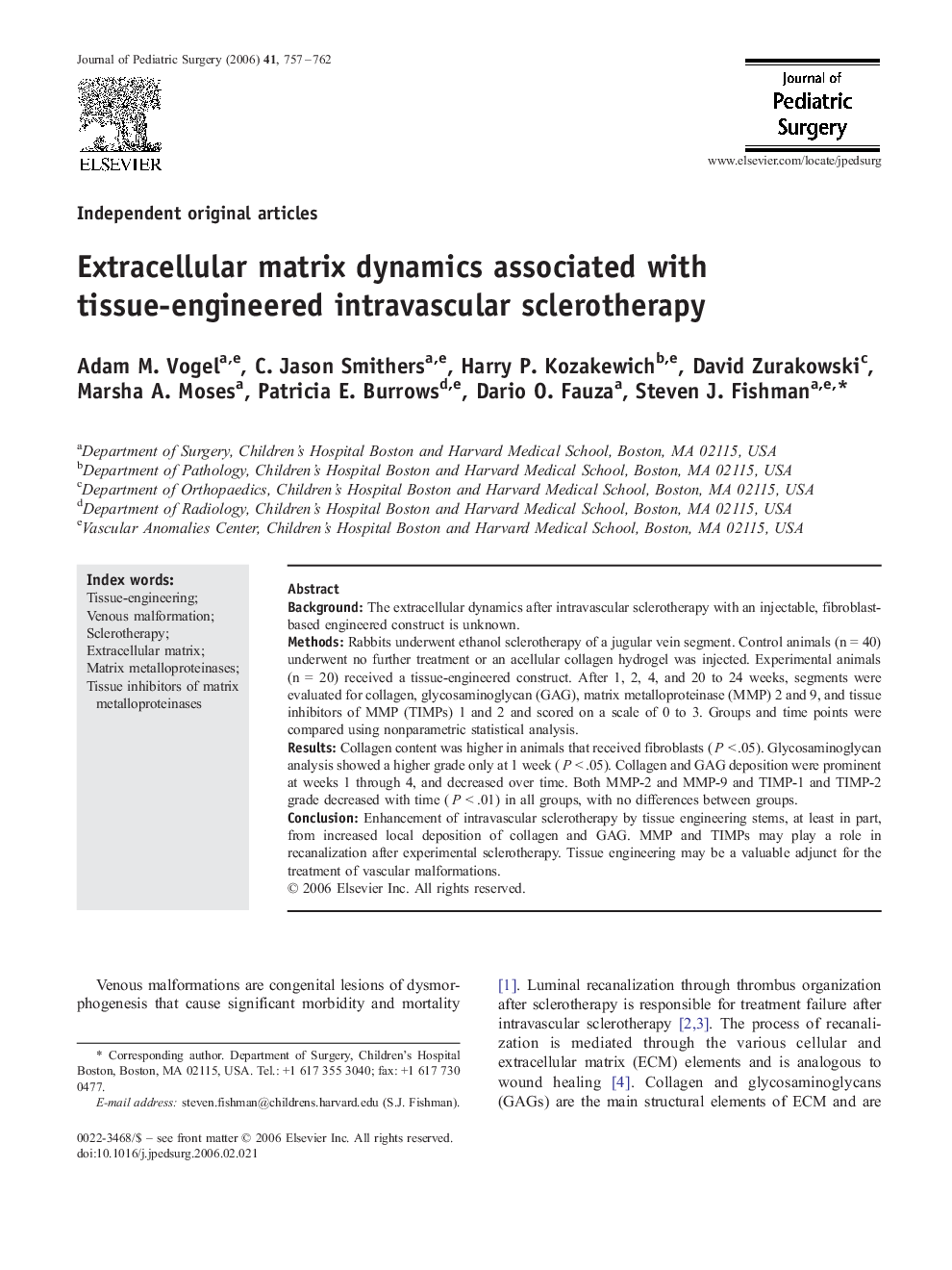| Article ID | Journal | Published Year | Pages | File Type |
|---|---|---|---|---|
| 4160609 | Journal of Pediatric Surgery | 2006 | 6 Pages |
BackgroundThe extracellular dynamics after intravascular sclerotherapy with an injectable, fibroblast-based engineered construct is unknown.MethodsRabbits underwent ethanol sclerotherapy of a jugular vein segment. Control animals (n = 40) underwent no further treatment or an acellular collagen hydrogel was injected. Experimental animals (n = 20) received a tissue-engineered construct. After 1, 2, 4, and 20 to 24 weeks, segments were evaluated for collagen, glycosaminoglycan (GAG), matrix metalloproteinase (MMP) 2 and 9, and tissue inhibitors of MMP (TIMPs) 1 and 2 and scored on a scale of 0 to 3. Groups and time points were compared using nonparametric statistical analysis.ResultsCollagen content was higher in animals that received fibroblasts (P < .05). Glycosaminoglycan analysis showed a higher grade only at 1 week (P < .05). Collagen and GAG deposition were prominent at weeks 1 through 4, and decreased over time. Both MMP-2 and MMP-9 and TIMP-1 and TIMP-2 grade decreased with time (P < .01) in all groups, with no differences between groups.ConclusionEnhancement of intravascular sclerotherapy by tissue engineering stems, at least in part, from increased local deposition of collagen and GAG. MMP and TIMPs may play a role in recanalization after experimental sclerotherapy. Tissue engineering may be a valuable adjunct for the treatment of vascular malformations.
